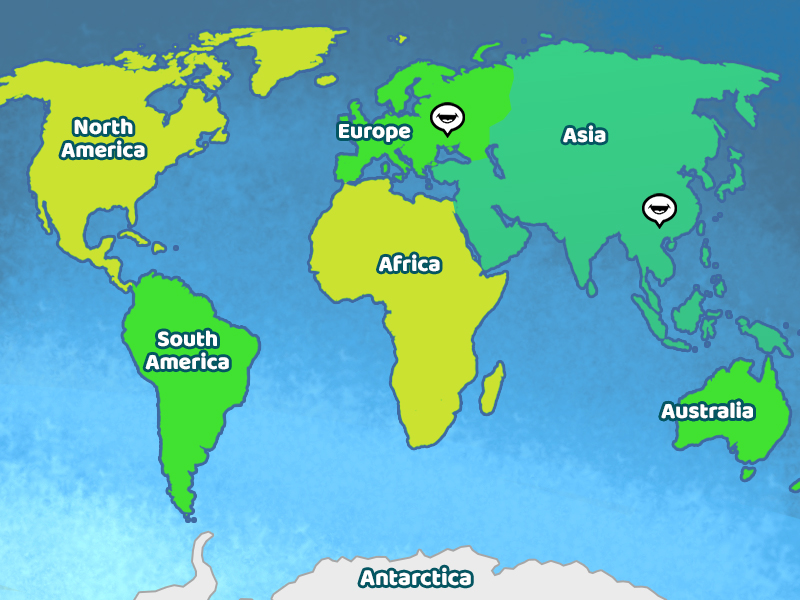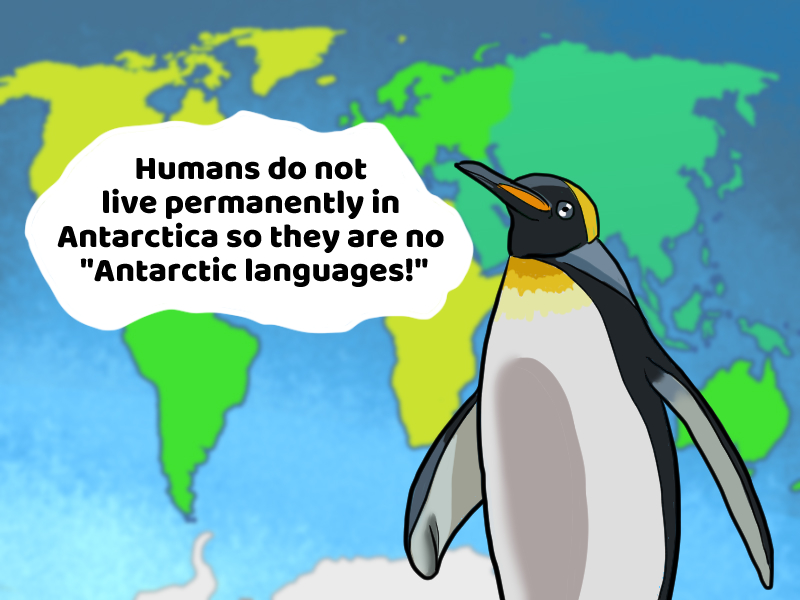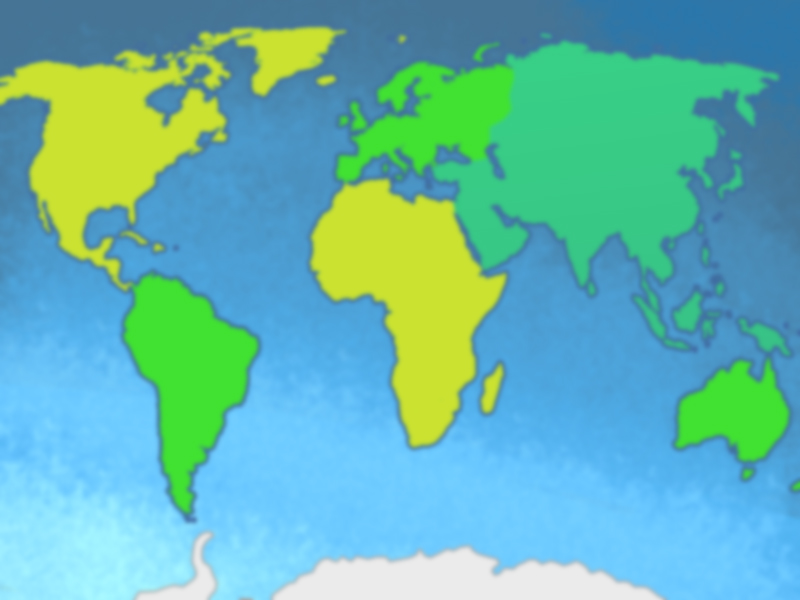
Introduction
Nearly 6000 languages are used on Earth by over 6 billion people! Some are written, some are signed and most are spoken. Time to explore some of the world's languages spoken by staff and students at the University of Manchester. Click on the continents to explore the languages.


North America Facts
1 of 3.
This continent contains the United States, Canada and Mexico. The three most widely spoken languages now are those brought by the European settlers - French, English and Spanish.
Before the European conquerors came there were a tremendous number of different languages spoken in North America. Most of these died out (for some it may be more appropriate to say they were killed!).
2 of 3.
Many of these languages however are still spoken; for example Cree in both Canada and the USA, Mohawk and Cherokee in the USA and Bella Coola in Canada. Inuktitut and other Eskimo languages are also spoken in the far North. Some of the languages have very few speakers left and under threat of extinction, just like some animals.
Many native languages are also spoken in Mexico, for instance Mixtec and Nahuatl. There is even a small language called Kickapoo.
3 of 3.
In both Canada and the US there also groups of people who speak a variety of German often called Pennsylvania German. Most of these people can be distinguished by the way they live and dress, like the Amish.
Because of the close contact between the native North American languages and English, some of the words have been borrowed into English; like wigwam, skunk and chipmunk.

European Languages
1 of 3
One of the biggest language families in Europe is the romance language family. French, Spanish, Portuguese, Romanian and Italian all belong to the romance family. These languages are descended from Latin.
Another important family is Germanic, with members like English, Dutch, German and Swedish. Gothic was also a member of this family, but this language died out.
Further East we have the Slavic language family with Russian, Polish and Czech for instance.
2 of 3
A smaller family is Celtic, the family which Irish, Scots, Gaelic, Welsh and Breton belong to.
These families are in fact all members of a bigger, older language family called Indo-European. These go back further to a common law spoken in central Asia.
3 of 3
Another family is Finno-Ugric with languages is like Finnish and Hungarian. The language of the Sami people of Finland also belongs here.
Basque is the odd one out in that it doesn't seem to have any relatives at all! It is spoken in Northern Spain and Southern France in what we call the Basque country.

Asia Facts
1 of 2.
This continent is the home of several of the most widely spoken languages in the world. Chinese, Hindi, Urdu, Arabic and Japanese.
There are also many other languages spoken here, some small and some big such as Russian, Mongolian, Kurdish, Armenian and Yupik.
2 of 2.
Sanskrit was also born in Asia, it is one of the oldest languages in the world and belongs to the Indo-European family.
We can tell that it is (distantly) related to English, because some of the words in Sanskrit and in European languages are very similar. Look at our English word "brother" and Sanskrit "bhratar", or our word "three" and Sanskrit "tri".

Africa Facts
1 of 3.
Many people believe that the human language first developed in Africa.
There are many languages spoken in Africa, some by millions of people (like Swahili, Hausa and Yoruba) and some by so few that the languages are in danger of dying out.
2 of 3.
Some African languages use 'clicks'; this means that the sound you make if you blow a kiss or the one you use to make a horse move are ordinary sounds of the language!
In many African countries the language of those who colonised the country is still an official language; for example Portuguese in Mozambique and French in the Ivory Coast.
3 of 3.
English is a very popular language in Africa. Many people think they will be more successful if they speak English; because of this many local languages may eventually be lost.

South America Facts
1 of 3.
In South America most people speak Spanish because the Spanish sailed to America in the 15th century and gradually conquered a huge amount of this continent.
Brazil however was colonised by the Portuguese and so Brazilians speak Portuguese, not Spanish. There are many more speakers of Portuguese in Brazil and Africa than in Portugal itself.
2 of 3.
There are still flourishing native languages spoken throughout South America. Quechua for example, is spoken by several million people in Peru, Bolivia and some parts of Ecuador.
Other big languages are Guarani, spoken in Paraguay and Aymara, one of the official languages of Bolivia.
3 of 3.
Just like in North America many native languages have died out, and many have very few speakers left.
Because there has been close contact between English and the native South American languages, words have been borrowed into English from these languages. For example, llama, puma and jaguar.

Australia Facts
Today English is the most widely spoken language in Australia and New Zealand, but there are many interesting native (or aboriginal) languages which was spoken long before the British colonised this part of the world.
You probably know something about Maori in New Zealand. This language is a newcomer to the area, it has only been there for about a thousand years! It is quite a close relative of the language spoken in Hawaii.
Native Australian languages have been around much longer, but like many other languages they are threatened with extinction. Some of these languages may only have one speaker left. How easy is it to keep a language going when you are the only speaker?!
One interesting fact about some Australian languages as that they use different words for everything, depending on whether they are speaking to close family or not. The language they use outside close family is sometimes called "mother-in-law language". If you spoke one of these languages you would have to learn twice as many words!
Near Australia is an area called Polynesia which is made up of many small islands. Still in this area, there many more languages spoken than in Europe.

Antarctica

English Demo

Facts
- English is a Germanic language with 318 million speakers, it is one of the most widely spoken languages in the world.
- German and Dutch are some of the closest relatives, but many words come from Latin through French.
- The French conquered England in 1066 and brought their language with them; many French words were gradually adopted into English. Examples are "mutton", "beef", "reward" and "wage".
- This is why English has such a large vocabulary - it has basic words from both Germanic and French and as well as from many other languages.
- English is spoken as a first language in many countries such as America, Australia and New Zealand and as a Second Language all over the world.